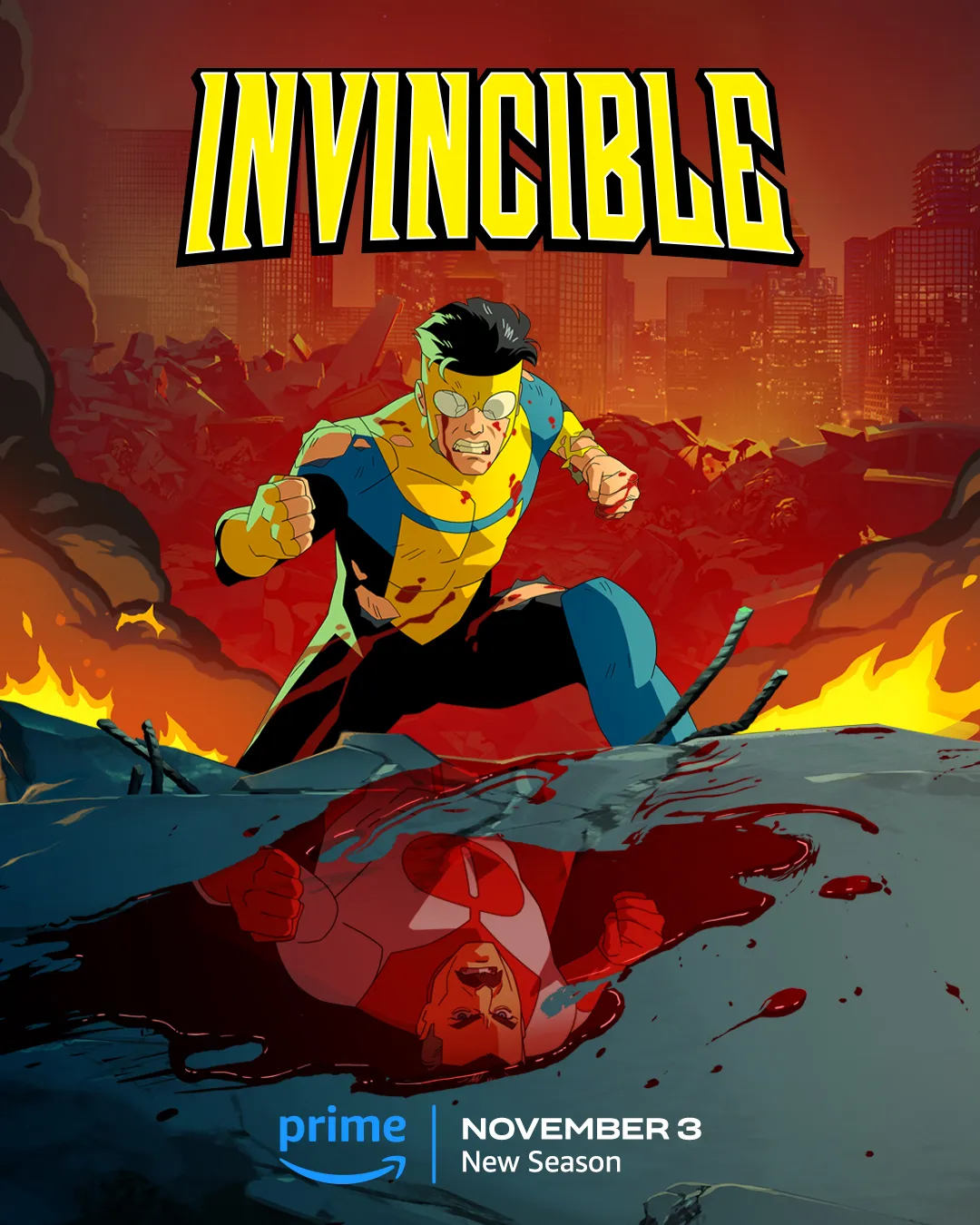The following contains spoilers for season two of “Invincible.”
“Invincible” season two continues to adapt Robert Kirkman’s comic of the same name and deals with the aftermath left in the wake of season one. Mark/Invincible (Steven Yeun) must face the consequences of his father’s, Omni-Man’s/Nolan’s (J. K. Simmons), actions while simultaneously desperate to prove he is nothing like him. Debbie (Sandra Oh) deals with her own trauma of being a normal person in a superhero world and must learn to not let that dominate her life. Omni-Man faces his humanity for the first time as he starts to care about the lives of what he used to view as lesser species. Atom Eve (Gillian Jacobs) struggles with the responsibility of her great power and has to realize that she cannot save everyone. Robot (Zachary Quinto) learns to be human and explores a relationship with Monster Girl (Grey Griffin). Rex Splode (Jason Mantzoukas) learns being a douchebag is bad. The Immortal (Ross Marquand) is tired of being immortal. Donald (Chris Diamantopoulos) is upset about being a robot. Allen (Seth Rogan) is on a mission to gather forces from across the galaxy to defeat the Viltrumite’s neverending galactic conquest. On top of all of this, the heroes also have to fight off mind-controlling aliens from Mars, the Viltrumites, a multiversal threat and whatever villains of the week are just lingering around.
If the overly elaborate plot summary did not give it away, “Invincible” season two falls apart because it tries too hard to adapt the source material in every way.
In the comics, the world of “Invincible” has such a distinct look and feel to it. The artistry done by Cory Walker and Ryan Ottley, as well as colorist Bill Crabtree, elevate each panel. While the outlines and designs can appear blocky and simplistic, they are incredibly hyper-detailed. Lines and edges are so sharp and defined, allowing readers to see every twitch of a muscle and crack in the pavement. The show’s attempt to adapt this, however, leaves much to be desired. While the action scenes do manage to capture the brutality of the comics, everything else looks muted and grayscale. Colors do not pop the way they should. The character’s frames are not all too different from one another, all looking like vague blocks of musculature. The show overall looks more like a slightly better version of the Disney XD show “Ultimate Spider-Man” than an adaptation of one of the most influential comics of this century.
A second major issue with the season is how it fails to set up its main villain. From the start of season one, Omni-Man is set up to be the main antagonist. He is a constant presence in the show, allowing for his motivations and eventual confrontation with Invincible to be properly set up. Season two, however, sets up Angstrom Levy as the main antagonist in the first episode but does nothing with it. Angstrom appears in the season premiere and then disappears until the last episode. When he finally turns back up, it feels out of place because his motivation for wanting to kill Invincible has not been explored at all and seems to come out of almost completely nowhere. This makes him feel like a dangling thread instead of the main antagonist the show tries to make him out to be.
This is all due to the main problem with “Invincible” season two: there are too many competing plotlines. The complete compendium for “Invincible” volume one is 1024 pages long, and volume two 1184 pages long. Not only does the graphic novel have the page count to expand on dozens of plots, subplots and different characters, but releasing issues week-to-week or month-to-month makes it more digestible. Eight 50-minute episodes, including credits, is not enough time to tackle this much story. Donald learning he is a robot, Mark’s best friend’s boyfriend who audiences probably forgot about learning he is a robot, Robot learning not to be a robot — and the list goes on and on and on. Almost every episode is overstuffed with plotlines that do not affect the overall story, taking away from its good parts that unfortunately do not get to shine.
Mark is the beating heart of this show, and viewers can feel that every time the episode cuts away from his story. The guilt he feels after the devastating fight with his father and the actions he takes because of it is powerful. The moment in episode four where Mark sees Nolan again and wants to hurt him for all the pain he caused but hugs him instead, is rich family drama anyone can relate to. While Mark’s relationship with Amber (Zazie Beetz) is still one of the show’s weaker elements, him realizing what he has put her through by not being there for her and the sacrifices he must make if he wants to be with her, is all fantastic character development. Also, Mark continuously risking his life to defy the Viltrumites is not only amazing from a character standpoint, but it is always super fun watching Mark get his butt handed to him.
Supporting characters get some of their best moments throughout the season as well. Omni-Man becoming changed by Mark so he finally sees the error of his ways beautifully redeems season one’s villain. Debbie going to therapy and naming Nolan’s son after her father shows how she is no longer letting her husband dominate her life. Rex Splode learning that being a superhero is a serious responsibility and that he should not be a douchebag is simple yet incredibly sweet.
Overall, “Invincible” season two’s attempt to too-closely adapt the source material left it with underwhelming animation and too much story to tackle in not nearly enough time. While it does include some of the best action scenes and character moments of the entire series, they unfortunately do not get to shine as a result of the season’s pitfalls. Two out of five stars.
—
Featured Image Courtesy of Prime Video

